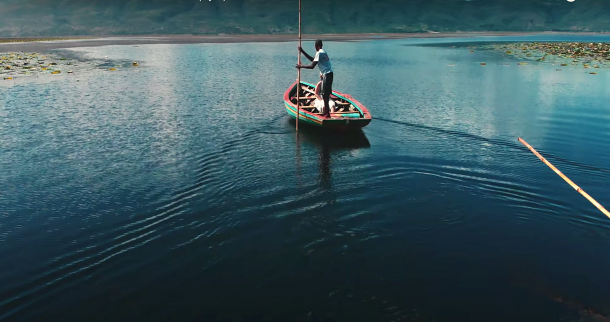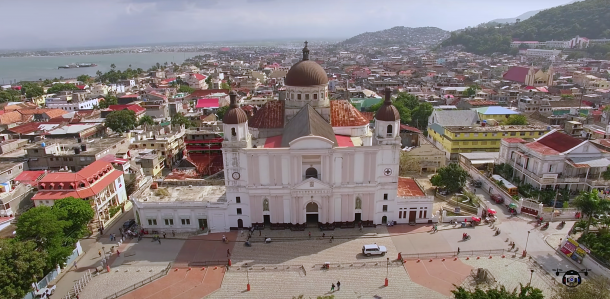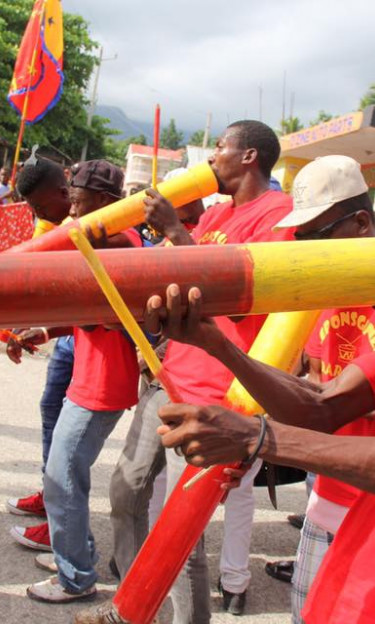As part of the Festival of Cultures of the Biennale of Luanda 2021, discover the cultural content proposed by Haiti!
Enjoy your visit!
Haiti or Ayiti, which means "the land of the high mountains", is the name that the first inhabitants, the Tainos and the Arawaks, gave to their island located in the Caribbean archipelago and that they populated peacefully until 1492, in harmony with their environment. They also called it Quisqueya or Bohio, where there were 5 regions called caciquats, each ruled by a sovereign called a "Cacique".
The arrival of the two remaining caravels of Christopher Columbus' expedition on December 5, 1492, marked the beginning of the over-exploitation of the riches of the island of Haiti, which the occupiers named Isla Española, or Hispanola, "Little Spain". One by one, the Taino villages and populations disappeared, victims of the diseases and forced labor introduced by the invaders. In 1659, the French began to settle in the western part of the territory, to develop the sugar industry. The Treaty of Ryswick in 1697 sealed the recognition of a French colonial administration on the island, which was then split in two and given a new name in its western part: Santo Domingo.

With 1804 and the name of the country recovered, Haiti became the haunt of all neighboring countries that still applied the slave system.
On January 1, 1804, after a long war of liberation that began in August 1791, Haiti proclaimed its independence, making it the first free Black Republic in the world. Its victory against Napoleon's army allowed it to enter the history of humanity as the first people to be freed from the yoke of slavery, after a struggle for the freedom of all Blacks, but also for the liberation of all oppressed people in the world, men and women, whatever their origins, as long as they were held in servitude, against their will. The Act of Independence institutes a People master of itself and of its land.

Haiti covers 10,714 square miles, which stands for (27,750 square kilometers) of the island known as Hispaniola, which it shares with the Dominican Republic. According to geographers' experts, Haiti is about three times the size of Cyprus Island but is slightly smaller than the U.S. state of Maryland. It is comprised of two peninsulas split by the Gulf of la Gonâve. The mountainous, nearly barren island of la Gonâve, which belongs to Haiti, rests in the center of the gulf. Haiti's portion of Hispaniola is significantly more mountainous than the rest of the island, with successive mountain chains running east to west on both peninsulas. The northern Massif du Nord is part of the island's backbone, which Dominicans call the Cordillera Central.

The Haitian Cultural Heritage Rescue Project aims to recover, safeguard and restore Haitian artworks, artefacts, documents, media, and architectural elements damaged and endangered by the earthquake and its consequences. The project is organised by the Smithsonian Institution in conjunction with the Government of Haiti, in particular the Ministry of Culture and Communication and the Presidential Commission for the Reconstruction of Haiti, in partnership with the U.S. Presidential Commission for the Arts and Humanities.

A city known for its rich heritage, radiant carnival and singular know-how, Jacmel is proud of its history as a hospitable city and a prosperous trading port. In the wake of the January 12th 2010 earthquake, Jacmel is preserving and enhancing its invaluable tangible and intangible heritage.
Jacmel is investing in its renewal through promoting culture, traditions, art and crafts. The Carnival of Jacmel, known for its creativity and exceptional originality, is the starting point for the creative development of the city: its painting, sculpture and giant papier-mâché masks being anchored deep in local traditions.

The perfect collaboration among some influential public figures to make a touristic video that showcases the most beautiful places in Haiti and to encourage tourists to visit and travel to Haiti. "This is Haiti"...They all have a common purpose which is to promote the hidden beauty of Haiti; the side that most medias don't emphasize on.
Take a look at the spectacular and breathtaking Haiti! experience some of the most stunning and unique locations the country has to offer: Port-au-Prince, Cap-Haïtien, Ile-à-Rat, Zitadelle La Ferrière, Bassin Bleu, Île-à-Vache and many more...
Disclaimer
The ideas and opinions expressed on this page are those of the Member State; they do not necessarily represent the views of UNESCO and the Organization hereby declines all liability. The designation employed and the presentation of material throughout the National Pavilion or this webpage do not imply the expression of any opinion whatsoever on the part of the Organization, concerning the legal status of any country, territory, city or area of its authorities, or concerning its frontiers or boundaries.







